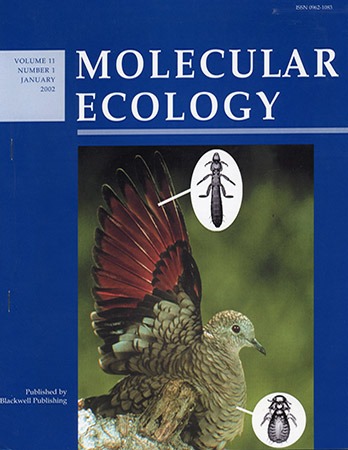
Biology Under Cover
Selected Journal & Book Covers from SBS Faculty
The population genetics of host specificity: genetic differentiation in dove lice (Insecta: Phthiraptera)
Dale Clayton
Summary
Some species of parasites occur on a wide range of hosts while others are restricted to one or a few host species. The host specificity of a parasite species is determined, in part, by its ability to disperse between host species. Dispersal limitations can be studied by exploring the genetic structure of parasite populations both within a single species of host and across multiple host species. In this study we examined the genetic structure in the mitochondrial cytochrome oxidase I (COI) gene of two genera of lice (Insecta: Phthiraptera) occurring on multiple sympatric species of doves in southern North and Central America. One genus, Columbicola, is generally less host‐ specific than the other, Physconelloides. For both genera we identified substantial genetic differentiation between populations of conspecific lice on different host species, generally 10–20% sequence divergence. This level of divergence is in the range of that often observed between species of these two genera. We used nested clade analysis to explore fine scale genetic structure within species of these feather lice. We found that species of Physconelloides exhibited more genetic structure, both among hosts and among geographical localities, than did species of Columbicola. In many cases, single haplotypes within species of Columbicola are distributed on multiple host species. Thus, the population genetic structure of species of Physconelloides reveals evidence of geographical differentiation on top of high host species specificity. Underlying differences in dispersal biology probably explain the differences in population genetic structure that we observed between Columbicol and hysconelloides.
